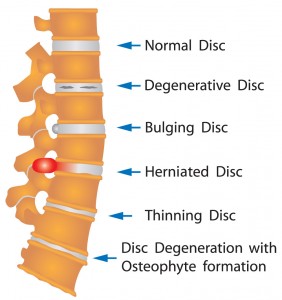The INR Spinal Pain Treatment Program – At last there is hope

Disc herniation or related spine disorders, which may occur following falls, motor vehicle accidents, sports injuries, or just in the course of ordinary life, may have a devastating impact on your quality of life. Daily back, neck, or leg pain, difficulty sitting, standing, walking or lifting can last a lifetime. Prior to the development of the INR anti-TNF treatment method few truly effective non-surgical treatments were available. Fortunately more and more patients with chronic pain that has failed to adequately respond to medical or surgical treatment continue to learn about the non-surgical, rapid, in-office INR pain treatment method.
Most people desire an alternative to the risks and expense of spine surgery, knowing that surgery can cause its own serious complications. A better answer was needed. A decade ago, a revolutionary new approach was invented at the INR: the local administration of a tiny amount (one cc., 1/30 of one ounce) of a unique medicine near the source of the pain.
A gentle, rapid, off-label method that takes only minutes, and is done in the privacy and comfort of our office. Anesthesia is not necessary, and following a brief visit patients may return directly to their usual daily activities.
INR medical providers now have been using this fast, gentle, non-surgical method for a decade, with thousands of patients treated, from around the world. This revolutionary approach for severe back pain, neck pain, or sciatica, and other breakthroughs invented at the INR, are cited by scientific publications by physicians and scientists from around the world; are now supported by multiple-studies and multi-center clinical data and are available for you, today.
Disclaimer: Individual results vary, not all patients respond. Continuing maintenance treatment may be necessary to maintain the clinical response. The method utilized for this indication is off-label. Please see the Terms of Use. Copyright 2018 INR, all rights reserved. Issued and pending U.S. and foreign patents, including, but not limited to, U.S. 6419944, 6537549, 6982089, 7214658, 7629311, 8119127, 8236306 and 8349323, all assigned to TACT IP, LLC; and Australian patent 758523.

